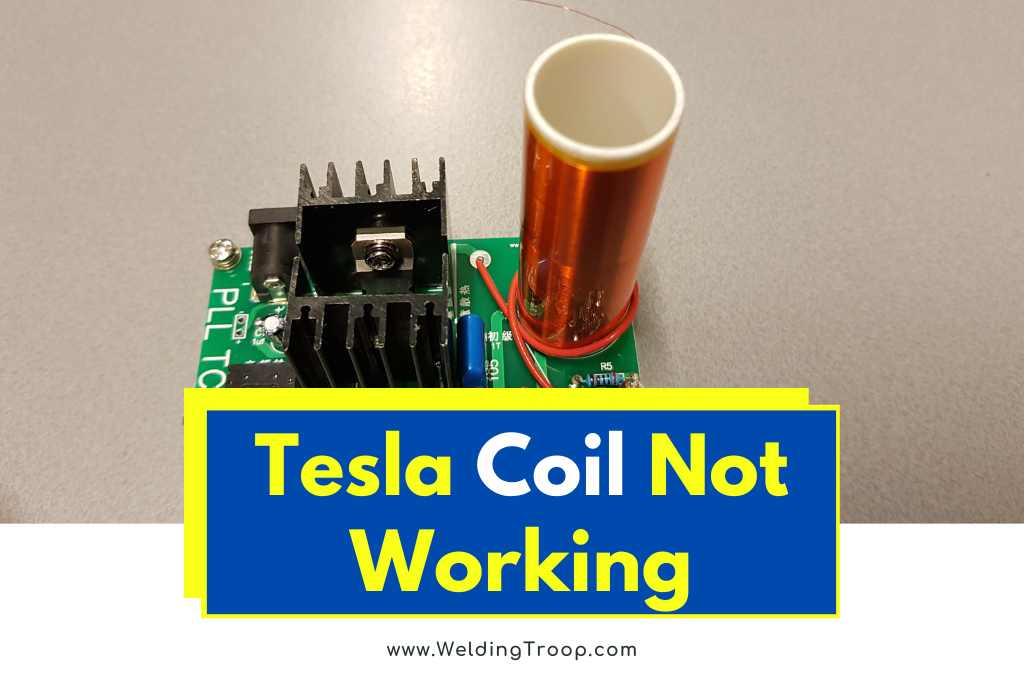Tesla coils have long fascinated engineers, hobbyists, and enthusiasts alike. These high-voltage devices are known for their spectacular electrical discharges and their potential to transmit wireless energy.
However, even with a well-designed circuit, it’s not uncommon for a Tesla coil to encounter issues and fail to work as intended.
In this comprehensive troubleshooting guide, we will explore the common reasons why Tesla coils may not be working and provide practical solutions to address these problems.
Table of Contents
Section 1: Power Supply Issues
One of the first areas to investigate when troubleshooting a non-functioning Tesla coil is the power supply. Here are some common power supply issues and their possible solutions:
Low Battery Voltage
If your Tesla coil is powered by batteries, it’s essential to ensure that the voltage is sufficient. Check the voltage level of your batteries using a multimeter.
Ideally, the voltage should be 8V or above for proper operation. If the voltage is low, replace the batteries with fresh ones.
Transformer or SMPS as Power Supply
Using a transformer or Switch Mode Power Supply (SMPS) instead of batteries can provide a more stable and reliable power source for your Tesla coil.
These power supplies can deliver the high voltage required by the coil consistently.
Section 2: Faulty Components
Another common reason for Tesla coil malfunction is faulty components. Here are some key components to check:
Transistor
Transistors are susceptible to damage, especially when mishandled. Verify if the transistor is functioning correctly using a multimeter or by replacing it with a new one.
Ensure that the transistor is not overheating, as this could indicate a problem.
Winding of Coils
The winding of coils plays a crucial role in the operation of a Tesla coil. Here are a few considerations:
- Wind the primary and secondary coils as close as possible without overlapping.
- Ensure that the direction of the primary and secondary windings is opposite to each other. You can invert the end of the primary coil connected to the circuit to achieve this.
- Scratch off the insulation of the secondary wire (magnet wire) where it is attached to the circuit or the top load.
Section 3: Top Load
The top load of a Tesla coil affects its performance and efficiency. Consider the following points:
- Students often use heavy metals as top loads. However, if you are using a low-power source like a battery, opt for a lightweight top load. You can create a simple top load using aluminum foil wrapped around a ping pong ball, ensuring a smooth surface.
Section 4: Proper Checking of Tesla Coil
To ensure the proper functioning of your Tesla coil, pay attention to the following:
- Avoid using LED indicators to gauge the coil’s performance, as they may not light up unless the coil is powerful enough.
- Check the fluorescent lamp used for testing. It may be faulty or already depleted. Consider using new lamps or using an electric tester near the top load. Small neon bulbs can also provide a visually appealing indication of coil activity.
Section 5: Wire Gauge and Winding Suggestions
The choice of wire gauge and the number of turns in the coils can greatly impact the performance of your Tesla coil. Here are some guidelines:
Wire Gauge
- The suggested wire gauge for the coils ranges from 28 to 38.
- Choose a gauge that suits your specific coil design and power requirements.
Number of Turns in Primary and Secondary Coils
- The number of turns in the primary coil can range from 2 to 5.
- The number of turns in the secondary coil can range from 300 to 3000.
Section 6: Additional Troubleshooting Tips
In addition to the common issues mentioned above, here are some additional troubleshooting tips to consider:
Safety Precautions
Always prioritize safety when working with high-voltage electrical systems. Make sure to follow safety guidelines and instructions provided with your Tesla coil kit or circuit design.
Consult Professionals
If you encounter complex issues or are unsure about certain aspects of troubleshooting, consider consulting with experienced electricians or engineers who specialize in Tesla coils.
Their expertise can help you diagnose and resolve any challenging problems you may encounter.
Conclusion
Tesla coils are fascinating devices, but they can encounter issues that prevent them from working as expected.
By systematically troubleshooting and addressing common problems such as power supply issues, faulty components, improper winding, and inadequate top loads, you can increase the chances of getting your Tesla coil up and running again.
Remember to prioritize safety and seek professional guidance when needed. With the troubleshooting guide provided in this article, you’ll be well-equipped to tackle common Tesla coil issues and enjoy the remarkable world of high-voltage electrical phenomena.

